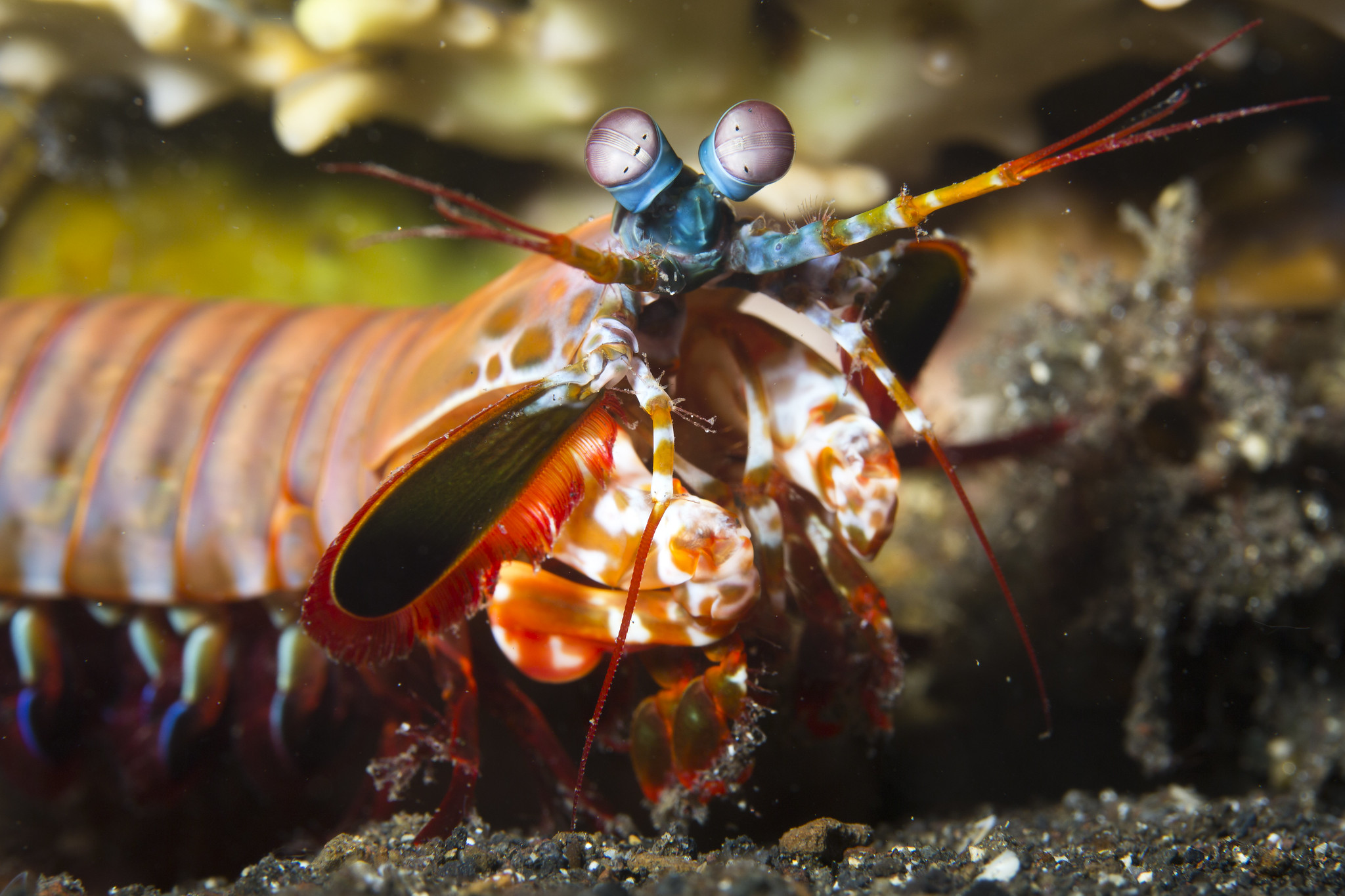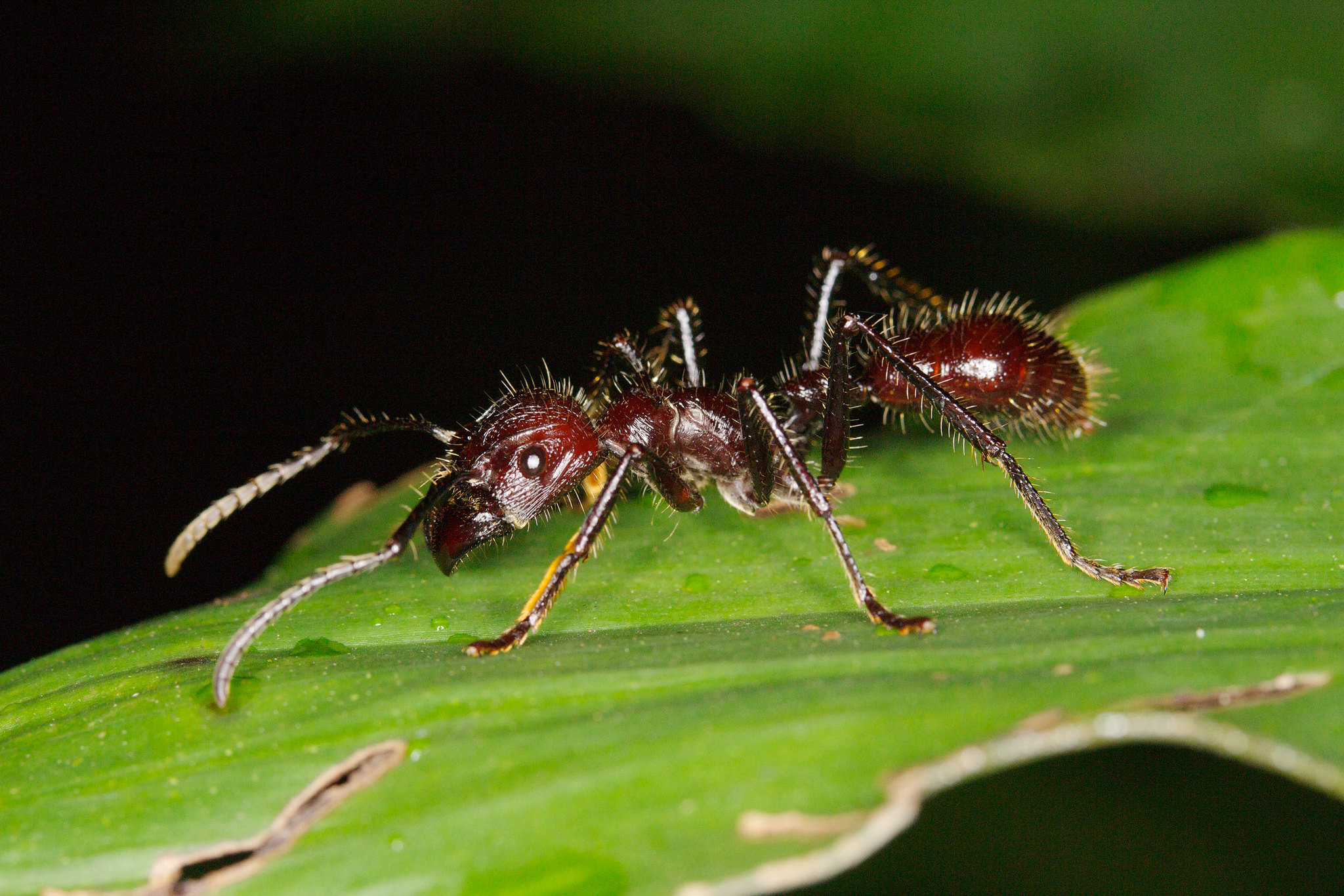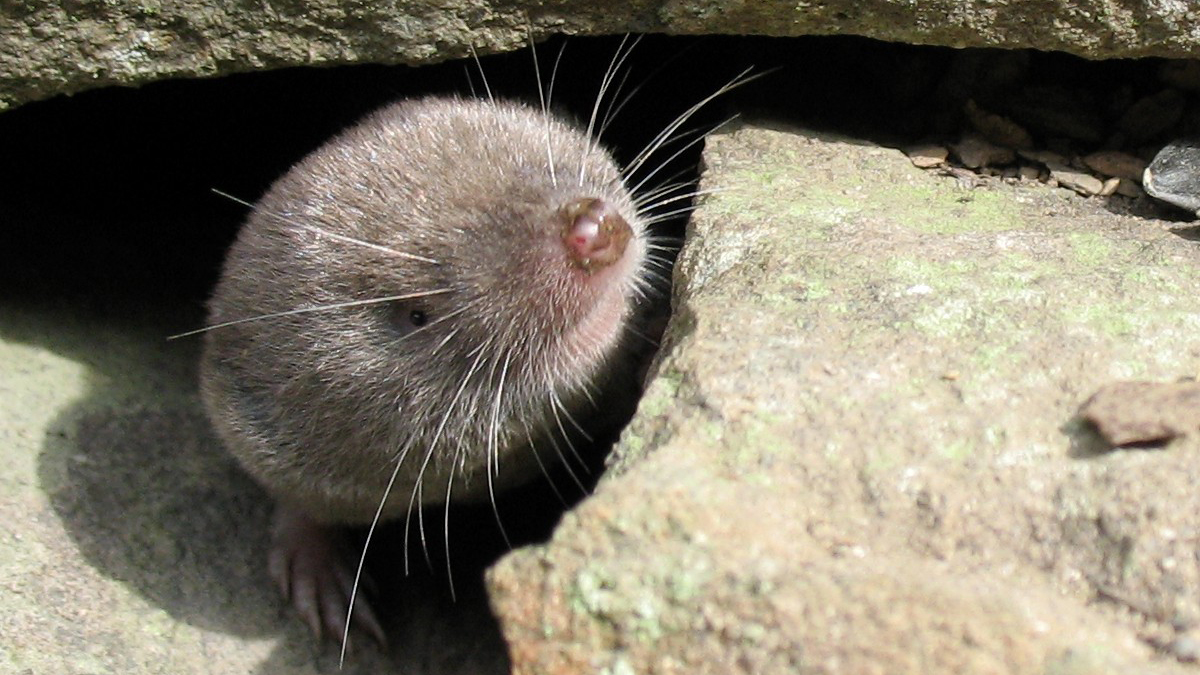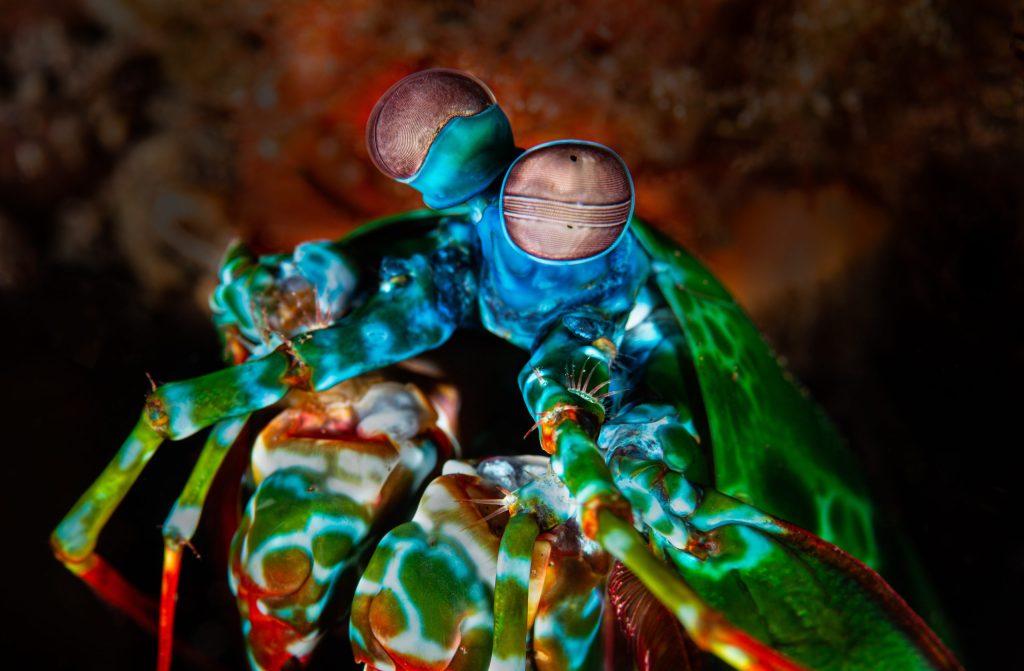It’s Halloween and my neighborhood has been overtaken by giant bats, spiders and snakes – of the decorative variety.
It’s also a time of year that makes many naturalists cringe. They see bats associated with zombies and creepy clowns, and worry it will lead people to think of bats as monstrous. And indeed, many “creepy critters” are unfairly vilified and outright persecuted.
And I agree. Snakes and bats have enough problems without folklore and myth leading to people killing them.
Still, I see nothing wrong with admitting that some animals cause our spines to tingle and sometimes fill us with outright fear. I find rattlesnakes to be among the most fascinating animals. Still, when I almost step on one, I almost invariably set personal high-jump records. The rattle has that effect on me. And I like to think it imbues me with a bit of humility, to know wild animals can still have that impact.
In that spirit, I present a few overlooked creatures that might cause your heart to skip a beat…because of their bites, or their eating habits, or just their eerie calls in the night. Value these creatures, but you’ll be forgiven if you don’t want to value them at close range.
-
Mantis Shrimp

© prilfish / Flickr My fishing rod twitched and I called my young son over. He began reeling and said it seemed unusual. It was. We were on a fishing pier on Chincoteague Island, Virginia. One of the great pleasures of coastal fishing piers is that you never know what you might catch.
The creature looked like a giant shrimp. It was not even hooked, just clinging tenaciously to the bait. I picked it up and carried it around the pier, showing it to other curious onlookers.
A consultation with a field guide revealed we had captured a mantis shrimp. It also revealed that, in handling this critter, I was very, very lucky.
The mantis shrimp is neither a mantis or a shrimp. They are carnivorous crustaceans that lie in ambush along the ocean floor. There are 450 species; some have long mantis-like pincers and some have modified “clubs.” Both are used for grabbing and stunning prey with great force.
In fact, the mantis’s strike is considered the fastest in the animal kingdom. They strike with the velocity of a .22 rifle bullet. Videos show crabs walking into range and being struck dead before even knowing a predator was around. They are a poor choice for aquariums, as they’ll eat the other inhabitants and many report that they can shatter the aquarium glass to escape.
A common nickname is “thumb splitter” for what happens when a person carelessly handles one of these animals. As I said, I got lucky. I released the shrimp with my thumbs intact.
-
Cookiecutter Shark

A close-up of a cookie cutter shark’s mouth. © JSUBiology / Wikimedia Commons Sharks inspire a lot of sensationalism and fear, most of it wildly unjustified. A cookiecutter shark would not be on the list of most-feared sharks. An adult is only 12-17 inches long and they often live deep in the ocean. Still, you have to admit their feeding habits are the stuff of nightmares.
Despite their small size, cookiecutter sharks attack much larger prey including seals, large fish, other sharks and even whales. They don’t kill the animal, instead chiseling off a chunk of flesh, leaving a crater behind.
Princeton University Press’s Sharks of the World describes it this way:
“Once close enough, the Cookiecutter shark’s thick lips and modified pharynx are used to attach itself to the prey, then their razor sharp lower teeth cut into the skin and, with a twisting movement of the body, a plug of flesh is excised. The shark then pulls free, holding the plug by its hook like teeth and leaving behind a crater wound.”
-
Insect Zombies

A jewel wasp dragging a cockroach. Photo © Deven Dadbhawala / Flickr Being turned into a zombie is a deeply embedded human fear, one that is currently experiencing a pop culture boost. For insects and other invertebrates, though, turning into a zombie is a very real, and highly disturbing, fate.
For example, consider the zombie cockroach. Yes, you read that right. It may seem difficult to pity a cockroach, let alone a zombie cockroach. But consider what happens when a cockroach meets a parasitic wasp.
There are many species of parasitic wasps, and their various parasitizing tactics reportedly inspired the Alien movies. The jewel wasp offers a particularly chilling example. When a jewel wasp’s eggs are fertilized, she needs to find one cockroach host for each egg.
A cockroach is considerably larger than a jewel wasp, and also has that tough exoskeleton. The wasp handles this by first stinging the cockroach on its abdomen, paralyzing it. Then the horror movie begins. The wasp’s next sting is a precise dose of venom to the roach’s brain.
This causes the cockroach to compulsively groom itself. It gets a jolt of dopamine, which Scientific American writer Christine Wilcox hopes makes the roach feel euphoric: “It just seems too gruesome for the animal to receive no joy from the terrible end it is about to meet.”
The wasp, out and about stinging other cockroaches, returns. The cockroach physically has the ability to walk away (or run!). But it does not. The zombie roach is under complete control of the wasp, and behaves, according to one source, “like a dog on a leash.” This is hard work for a wasp, so she pulls off the roach’s antennae and drinks the seeping liquid.
Then she leads the roach by the antennae nubs into a burrow she’s excavated. She deposits a single egg on the roach’s leg, then buries it alive with pebbles. The nightmare is far from over.
The venom keeps the roach alive and healthy by slowing its metabolism. When the young wasp hatches, it now has its first, and still fresh, cockroach dinner. Read more stories of insect zombies.
-
Bullet Ant

© Graham Wise / Flickr Bullet ants, found in Central America and South America, are vegetarians. They’ve never killed a human. But they make the list for one reason: pain, and lots of it.
Justin Schmidt, the biologist who gets stung for science, calls the bullet ant’s sting the most painful of all insects. Numerous people have attempted to describe the agony, that can last hours. Victims off roll around on the ground and vomit from the excruciating sting.
But Schmidt, who has developed a pain rating for all the insects that have stung him (and there are many), describes the sting most colorfully: “Pure, intense, brilliant pain. Like walking over flaming charcoal with a 3-inch nail embedded in your heel.”
-
Peafowl
Wait, the proud peacock is creepy? It’s true that domestic and feral peafowl occasionally charge humans, with at least one incidence of a peacock killing a man. But this bird is not a serious threat. However, its call? More than one person has called the police after hearing the peacock’s wailing cry, which sounds like a horror movie victim pleading for help.
My wife Jennifer spent her college summers working at a nature preserve. She fielded numerous calls from concerned citizens reporting screaming children on the property. It was just the resident peacock.
I sometimes hear one of the local peacocks when I’m fishing at dusk on the local river. Even though I know what it is, the eerie calls still gives me pause.
-
Red Fox
Another animal with an underrated and highly creepy call. While we may still vaguely associate “what the fox says” with that dreadful viral song, the reality is that fox calls can keep you up at night.
This is particularly true of the mating “scream” used by vixens and occasionally males to attract mates. For human sensibilities, this is not one of the fox’s more endearing traits.
National Geographic describes it “as if Jack the Ripper is roaming the streets” while Popular Science graphically describes it as “a shrill, hoarse scream of anguish, it sounds more than anything like a human baby undergoing some kind of physical torture.”
So, yes, it’s unpleasant. Really, really unpleasant. Sometimes you will hear the screams moving down your street at night, something to make you bolt up in bed. No need to be alarmed. It’s a fox on the prowl.
As an aside, one Halloween night I was taking an evening stroll around the neighborhood when I was actually charged by a red fox. It looked to be a healthy animal but it repeatedly rushed forward towards my heels, then darted back. Certainly my weirdest Halloween encounter.
-
Shrew

Northern Short-tailed Shrew. Photo © Gilles Gonthier / Flickr Finally, the perpetual Cool Green Science crowd pleaser, the shrew. My previous feature on shrews is the most popular story I’ve ever written. Apparently others are fascinated with these fierce little predators. You can read that for the full array of shrew facts, but I’ll share here their disturbing eating habits.
You can spend way too much time on YouTube watching videos of shrews attacking mice, scorpions, snakes and other larger creatures. Spoiler alert: the shrew wins.
This is because many shrew species are venomous. Research has found that an individual shrew stores enough venom to kill 200 mice. Some shrews also use this venom for something called live hoarding.
Live hoarding sounds innocuous enough, but in reality it shares numerous plot points with that terrifying movie Hostel. Here’s how it works.
The shrew lacks hollow fangs (as in venomous snakes) but instead has a gland that allows saliva to flow with the venom. When the shrew encounters its prey – often an invertebrate, but it can also be a mouse or other vertebrate – it begins biting it, allowing the venomous saliva to flow into the wound.
For the prey, this is the beginning of a very bad day. The venom paralyzes the creature, but keeps it very much alive. The shrew can then move it to a cache, available for whenever hunting is not going so great. For an animal that has to eat constantly, this keeps a fresh if unsavory meal always at the ready.
The American Chemical Society reports that a mealworm can be kept, paralyzed but alive, for 15 days.
Shrew bites on humans are reportedly painful but fade in a few days. Be very, very glad these animals are not larger.




I happened upon this blog by accident.
I had just received as a birthday present the sweatshirt with the image of screaming shrew.
Above the image is printed FIRST OF ALL,
Then the image of the screaming shrew, and beneath that image is the phrase
I’M A DELIGHT.
This led me to look up shrews and I happened upon this nature blog.
I have just been reading on and on and I’m totally fascinated by this information.
I plan to keep visiting this nature blog.
Thank you for some really entertaining facts!
What kind of noise does a fisher make?